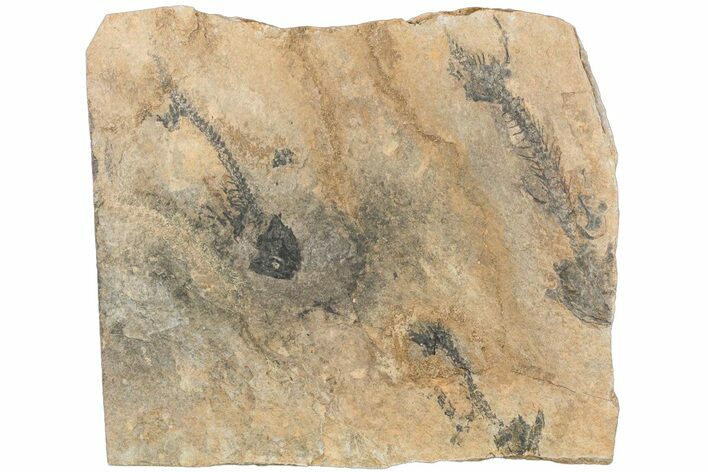This Specimen has been sold.
Three Discosauriscus (Permian Reptiliomorph) With Pos/Neg Split
This is a rare cluster of three Discosauriscus from the Early Permian deposits of the Czech Republic. There are three nearly complete animals in close association with visible skulls, spinal column and limbs. The largest Discosauriscus is about 7.6" long and the rock is 9.4 x 8.8" It was a perfect positive/negative split and both halves are included.
No repair or restoration. Includes a pair of display stands.
No repair or restoration. Includes a pair of display stands.
Discosauriscus was a small seymouriamorph that lived in Central Europe during the Lower Permian Period. Many seymouriamorphs were terrestrial or semi-aquatic. However, aquatic larvae bearing external gills and grooves from the lateral line system have been found, making them unquestionably amphibians. The adults were terrestrial. Some of the best fossils of Discosauriscus species have been found in Boskovice basin in the Czech Republic.
Because the skeletons of Discosauriscus were lightly sclerotized, they are rarely as well preserved as the intact specimen found on this plate. This fossil clearly defines the wide jaws, short limbs, and relatively long tail of this species. A well-preserved, lateral-line system has been described by researchers, which suggests that Discosauriscus may have had electroreceptive organs.
Because the skeletons of Discosauriscus were lightly sclerotized, they are rarely as well preserved as the intact specimen found on this plate. This fossil clearly defines the wide jaws, short limbs, and relatively long tail of this species. A well-preserved, lateral-line system has been described by researchers, which suggests that Discosauriscus may have had electroreceptive organs.
SPECIES
Discosauriscus (Letoverpeton) austriacus
AGE
LOCATION
Boskovice, Moravia, SE Czech Republic
FORMATION
Limnic Deposits
SIZE
Largest 7.6" long, rock 9.4x8.8"
CATEGORY
ITEM
#125592
We guarantee the authenticity of all of our specimens.
 Reviews
Reviews



















